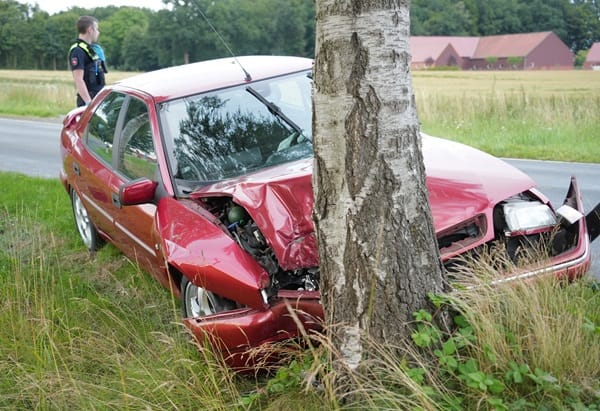Distracted driving has emerged as a significant threat to road safety in recent years. Defined as any activity that diverts attention from driving, it encompasses a range of behaviors, including texting, talking on the phone, adjusting the radio, or even eating. The prevalence of smartphones and in-car technology has exacerbated this issue, making it crucial to understand its implications on road safety.
Recent studies reveal that distracted driving is a leading cause of car accidents, accounting for approximately 9% of fatal crashes and an estimated 390,000 injuries each year in the United States alone . As awareness grows about this pressing concern, it is essential to delve into the statistics that underscore the impact of distracted driving on car accidents.
Current statistics on car accidents
Current statistics paint a stark picture of the consequences of distracted driving. The National Highway Traffic Safety Administration (NHTSA) reports that in 2021, around 3,522 people lost their lives due to accidents involving distracted driving . According to knightlawfirm.net, this figure represents a significant portion of the overall 38,824 fatalities from car accidents that year. Furthermore, research indicates that distracted driving incidents have increased by nearly 20% over the past decade, highlighting a troubling trend.
When compared to other leading causes of car accidents, distracted driving is increasingly alarming. For instance, while driving under the influence accounted for 29% of traffic fatalities in the same year, distracted driving has been shown to be equally, if not more, dangerous. This comparison underscores the urgency of addressing the distracted driving epidemic, as more drivers may underestimate the risks involved.
Psychological and behavioural factors
One crucial aspect of distracted driving is the psychological and behavioural factors that contribute to this risky behaviour. Studies reveal that the human brain is not adept at multitasking, particularly when it comes to the complex task of driving. Engaging in secondary activities, such as texting or using a mobile app, significantly impairs reaction time and increases the likelihood of accidents .
Education and awareness campaigns play a pivotal role in altering driver behaviour. For instance, initiatives that target younger drivers, who are often more prone to distractions, have proven effective. By emphasizing the dangers of distracted driving and promoting safer habits, these campaigns can create a culture of responsibility among drivers. As awareness continues to grow, it is vital for individuals to recognize the risks associated with distractions behind the wheel.
Moreover, behavioural interventions, such as self-regulation strategies and the use of mobile applications that limit phone functionality while driving, can help curb impulsive actions. Understanding the psychological triggers that lead to distracted driving is essential for developing effective prevention measures. By addressing these factors, we can foster a safer driving environment and reduce the alarming statistics associated with distracted driving.
Legal implications
The legal implications of distracted driving accidents are significant and multifaceted. As explained by accidentjusticepro.com, when a driver causes an accident due to distractions, they may face serious legal consequences, including fines, license suspension, and even criminal charges. Courts have increasingly held distracted drivers accountable, reflecting the growing recognition of the dangers posed by this behavior .
Case studies illustrate the severity of the consequences faced by distracted drivers. In one notable case, a driver who caused a fatal accident while texting was sentenced to several years in prison. Such cases serve as critical reminders that distracted driving not only endangers lives but also carries serious legal ramifications for those who engage in it. As awareness of these legal consequences spreads, it can encourage safer driving practices among individuals.
Preventative measures
Preventative measures are essential in mitigating the impact of distracted driving. Technological solutions have emerged to address this issue, with many smartphone manufacturers now implementing features that limit distractions while driving. For instance, “Do Not Disturb While Driving” modes block notifications and alerts, allowing drivers to focus solely on the road .
In addition to technological innovations, policy recommendations can significantly contribute to reducing distracted driving incidents. Stricter laws banning the use of handheld devices while driving and enhanced enforcement measures can deter drivers from engaging in risky behaviors. By adopting a multi-faceted approach that combines technology, education, and policy changes, society can take meaningful steps toward reducing the prevalence of distracted driving.
Moreover, encouraging safe driving habits among young drivers is essential. Schools and driving programs can incorporate distracted driving simulations into their curricula, allowing new drivers to experience the consequences of their actions in a controlled environment. These experiential learning opportunities can foster a deeper understanding of the risks and encourage safer driving practices.
Conclusion
In summary, the impact of distracted driving on car accident statistics cannot be overstated. With rising accident rates linked to distractions, it is vital to recognize the psychological and legal ramifications that accompany this behavior. As technology evolves, so too must our strategies for combating distracted driving.
By embracing preventative measures, fostering awareness, and implementing stricter laws, we can work towards safer roads for everyone. Each driver must commit to minimizing distractions and promoting a culture of responsibility on the road. Only then can we hope to see a significant decline in the alarming statistics surrounding distracted driving.

